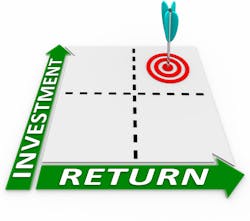Traditional ROI is Outdated When Evaluating Technology Investment
The decision to invest in new technologies involves a more complex set of decision factors that should be evaluated beyond traditional return on investment (ROI) metrics, according to a new report from the MAPI Foundation.
One reason for new metrics is that new technology investment is unlikely to be a reaction to changes in the short-term economic environment as is often the case with capital investment. There is a larger and more complex set of factors, related to shifting fundamentals of cost pressures and other types of globalization-induced market pressures.
Among the broader set of cost factors to consider are the potential risks associated with investing in an evolving technology and implementation impacts on the supply chain.
One particular technology, automation, is distinctly different than traditional investment, the report explains. While automation investment has some aspects of capital investment in the sense of placing physical assets into a production structure, automation investing requires an expanded view and is often tangential to process innovation. The survey data show that in terms of automation technology evaluation, the lowering of production costs and improvement in product quality were the dominant performance criteria.
Findings of the report include:
- Economic theory identifies the importance of a number of drivers of corporate capital investment demand, including the output of the company’s goods and services, the cost of capital (generally defined as a weighted average of the cost of equity and debt financing of capital), the expected revenue from the use of capital assets, and the market value of capital assets.
- Standard capital investment analysis and the standard use of the return-on-investment (ROI) project decision tool assume that the technological frontier is fixed. Technology is, in essence, a known quantity. By contrast, in the case where decisions are being made on the purchase and implementation of technologies that are new to the company and often new to the world, the purpose of investment is often different and the knowledge framework of the investing company is distinctly different.
- In many ways, new technology adoption is a complete break from the accelerator model of investment. Potential users might see the benefits as changing the productivity of capital or the capital/output ratio.
- With new technology investment, the benefit side of the return-on-investment (ROI) equation contains a broader set of factors than is the case with a fixed technology frontier. Investing when the new technology is working its way into the industry production structure can provide critical value by helping the individual company establish differentiation and/or remain cost competitive. There are also multi-layered benefits deriving from an improved production cost / product quality picture as well as the increased productivity of capital.
- The potential costs of a new technology investment include additional considerations beyond traditional measures. Among the broader set of cost factors to consider are the potential risks associated with investing in an evolving technology and implementation impacts on the supply chain.
The report outlines new criteria that is needed to capture the expanded benefits, costs, and likely productivity gains associated with new technology investments.
